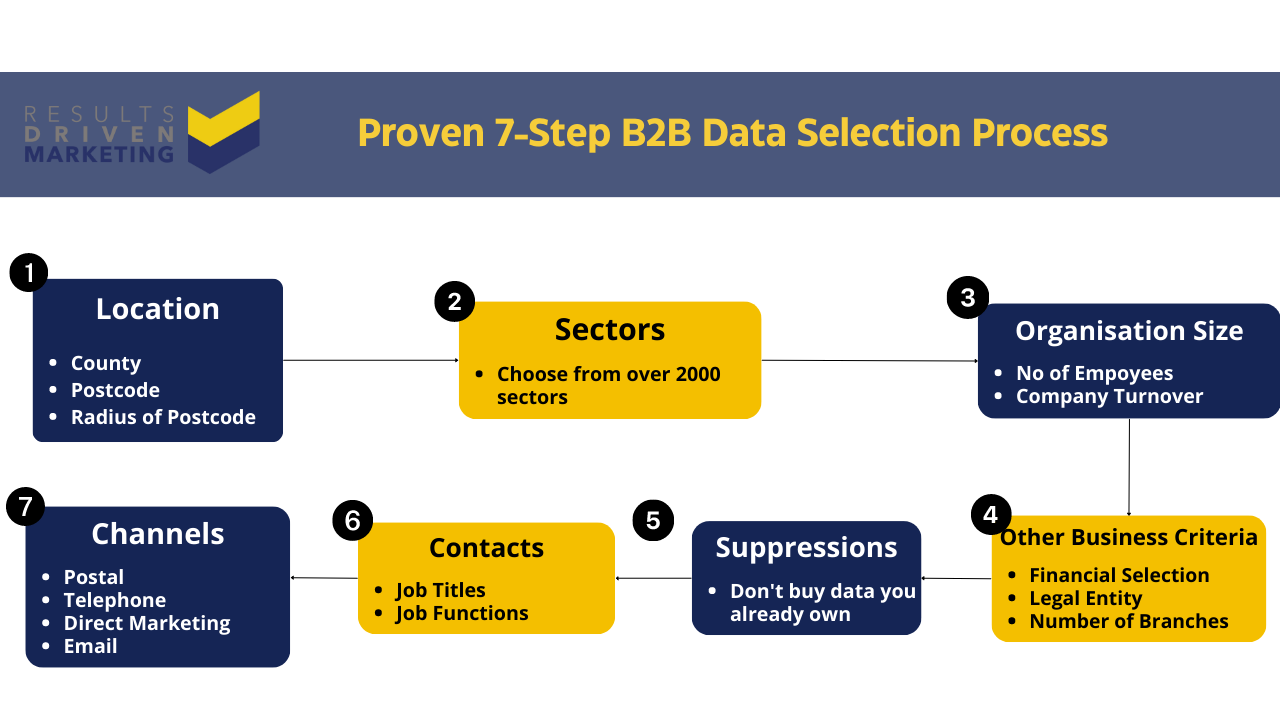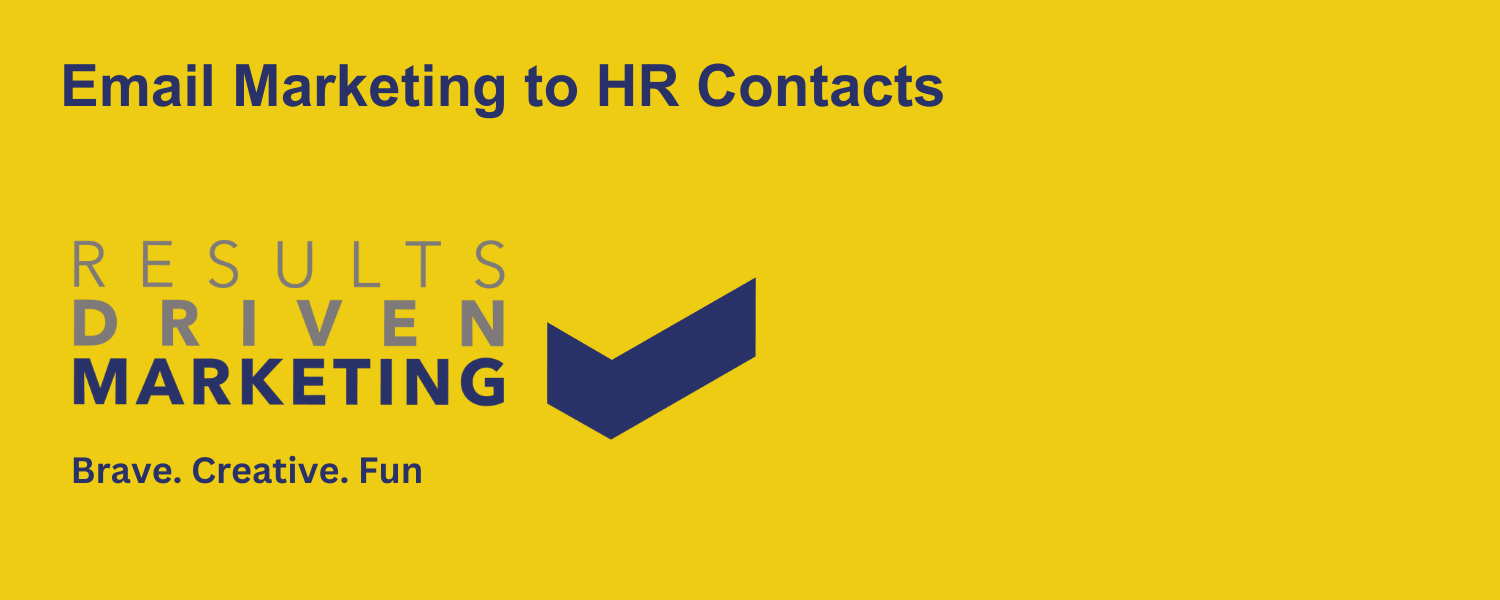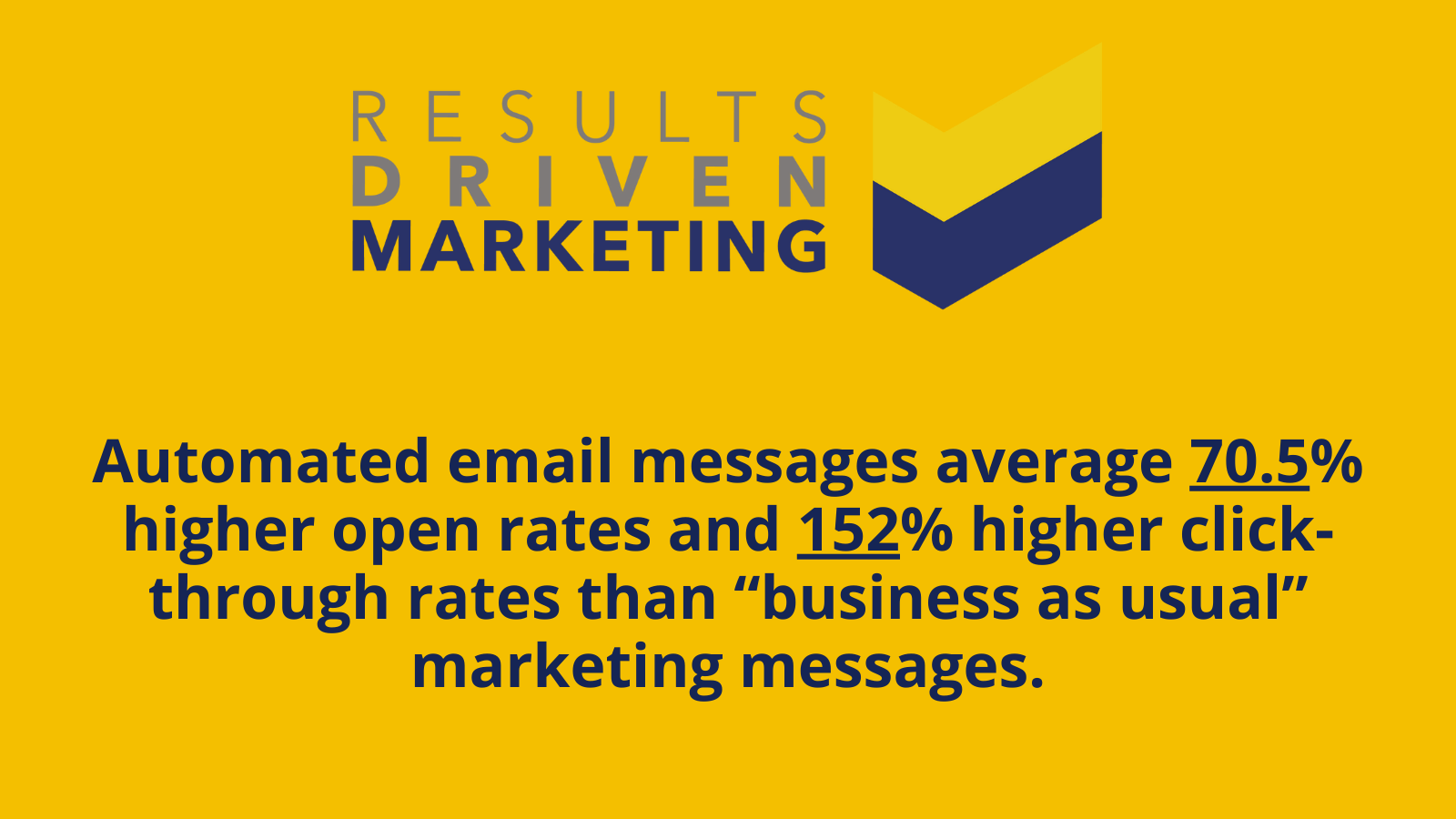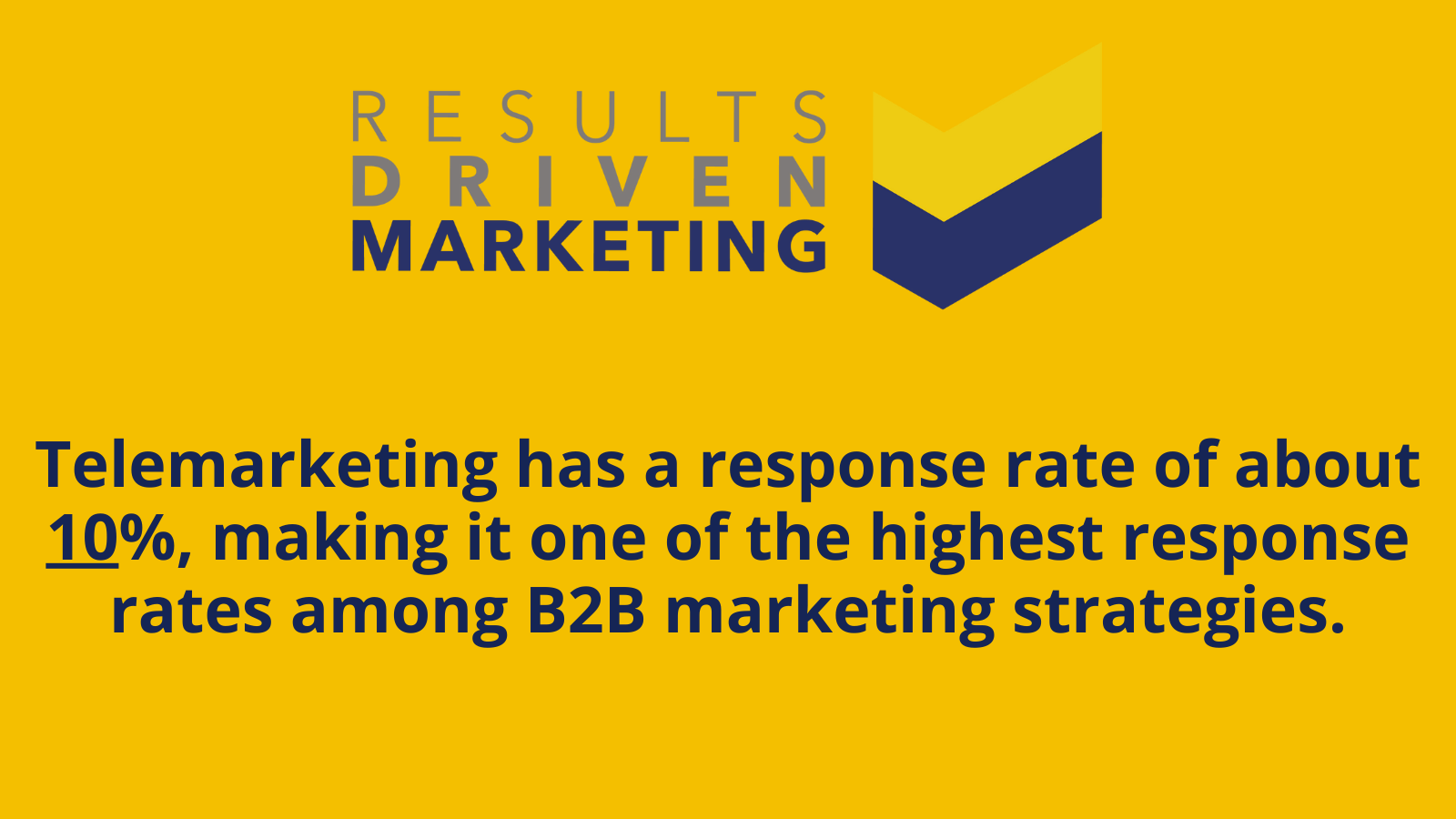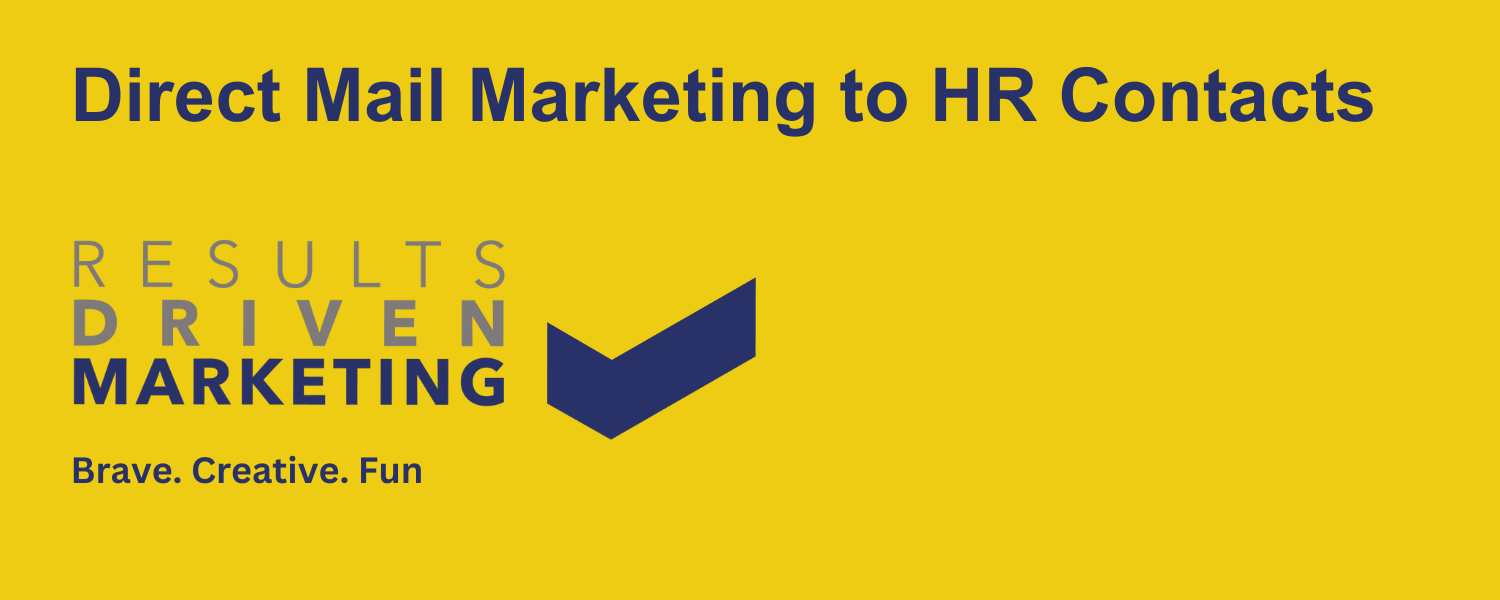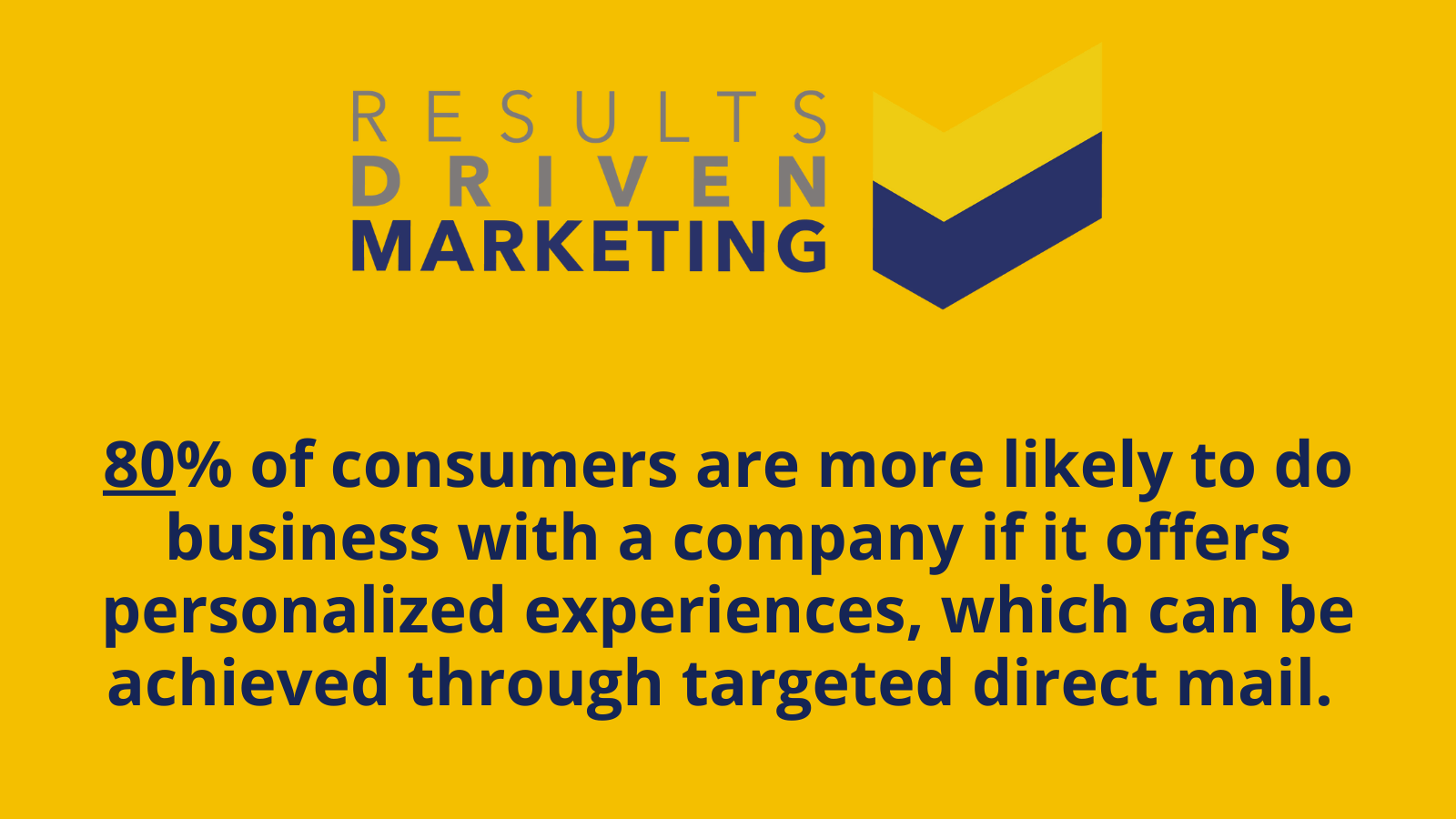
HR Contacts Database
Navigate the heartbeat of every organisation with our HR Contacts Database! Delving into the corporate world’s pulse, it’s evident that human resources are the lifeblood of success. But connecting with the right HR contacts can often feel like an intricate dance.
Enter our dedicated HR contacts database: a gateway to simplifying those steps and ensuring you’re always in rhythm with the industry’s best. Curious about how this can transform your direct marketing game? Read on, and let’s explore this treasure trove together!
Table of contents:
What is the UK HR Contacts Database?
Used to generate leads and new business, our UK HR Contacts Database is a marketing tool used by companies looking to advertise their services directly to HR Decision Makers within organisations.
UK HR Contacts Database provides a fantastic platform from which to launch targeted email campaigns to generate new business.
Who uses the UK HR Contacts Database?
It is successfully used by software developers and suppliers, recruitment agencies, training providers and many many more.
Where does the UK HR Contacts Database originate?
We work with the UK’s leading data aggregator who have been voted b2b data supplier of the year for a record five times.
Established for over thirty years, they take the very best parts of the top five data houses in the UK to compile their master file of over 3.25 million records, which we supply from.
How many records does the UK HR Contacts Database contain?
At the time of writing (we operate from a live database)…
The UK HR Contacts Database contains contact information for 60,000 HR decision-makers across the UK.
What does a record on our UK HR Contacts Database contain?
Each record can come complete with:
- Company name
- Full postal address
- Contact name
- Direct email address
- TPS checked telephone number
- Industry sector
- Number of employees
- Company turnover
Can the UK HR Contacts Database be filtered?
Absolutely. We understand that no two customers the same and encourage each to discuss their individual needs with us.
Our consultants are more than happy to talk you through we can go about making this meet your specific markets, exactly.
How accurate is the UK HR Contacts Database?
Every file we supply is also guaranteed accurate to industry high standards:
- 98% postal address accuracy
- 90% telephone number and contact name accuracy
- 90% email address accuracy
Should we fall below any of these minimum accuracy guarantees we are obliged to provide you with a like for like replacement or pro-rata refund.
This gives our clients total peace of mind when purchasing from us.
Maximising Outreach: Key Benefits of Using an HR Contacts Mailing List
Human Resources (HR) decision-makers play pivotal roles within organisations, making choices about tools, software, training programs, and more. For businesses offering products or services tailored for this demographic, reaching out effectively is crucial. Utilising an HR contacts mailing list offers a direct route to these influential individuals. Here are the major advantages of leveraging such a mailing list.
Direct Access to Decision-Makers:
An HR contacts mailing list provides direct communication channels to the individuals who make or influence purchasing decisions within the HR department. This ensures your offerings are presented to those with the power to act upon them.
Tailored Marketing Campaigns:
With access to a specific audience subset, marketing messages can be designed to address the unique needs, challenges, and pain points of HR professionals, enhancing their relevance and impact.
Higher Conversion Rates:
Targeted outreach, like those directed via an HR contacts mailing list, often results in higher engagement and conversion rates, as the recipients find the content more pertinent to their roles.
Time and Cost Efficiency:
Random or broad-spectrum marketing campaigns can be resource-intensive with lower conversion rates. Focused efforts, using an HR contacts mailing list, allow businesses to use their resources more optimally, yielding better ROI.
Market Segmentation:
Many mailing lists come categorised based on company size, industry, or geographic location. This allows businesses to segment their campaigns, tailoring messages for different HR audiences.
Building Credibility:
Consistent and valuable engagement with HR professionals can position your business as a trusted and reliable partner, essential for long-term relationships.
Feedback and Insights:
Direct communication channels often encourage feedback. Understanding the needs, preferences, and concerns of HR professionals can provide invaluable insights for product development or service refinement.
Stay Ahead of Competition:
Having an updated HR contacts mailing list ensures that you can swiftly introduce new offerings or updates to a receptive audience, gaining an edge over competitors.
Scalability:
A robust mailing list allows businesses to scale their marketing efforts, expanding outreach as the list grows or as the business ventures into new markets.
Consistent Engagement:
With a structured HR contacts mailing list, businesses can maintain regular communication with HR professionals, keeping them informed about updates, industry news, or promotional offers, fostering sustained engagement.
Conclusion:
In the competitive landscape of B2B marketing, precision is key. An HR contacts mailing list offers businesses the accuracy and relevance needed to resonate with HR decision-makers. By ensuring direct access, tailored engagement, and efficient resource allocation, such mailing lists become more than just tools—they become strategic assets, driving conversions and building lasting business relationships.
Is the UK HR Contacts Database GDPR Compliant?
Compliance is something that we place massive importance on. We wouldn’t be able to stand by our company ethos of only supplying the best b2b data available if we didn’t.
If you have any concerns with regards the compliancy of our UK HR Contacts Database or any of our b2b data solutions, feel free to call us on 0191 406 6399 and speak to us directly.
What licence terms are offered on the UK HR Contacts Database?
All our b2b data is made available on a 12 month multi-use licence which means you can use it as much as you like.
What format does the the UK HR Contacts Database come in?
When you buy b2b data from us, you file is sent you via secure email transfer in either Excel format.
How much does the UK HR Contacts Database cost?
The answer is…
It depends!
Like most things, the more you buy, the cheaper it gets.
Give us a call today and we will craft a totally bespoke for you.
Contact us to find out more about how our highly targeted b2b data can make the difference in your business today.
International email lists are also available if you look to offer your products and services globally
Marketing to HR Contacts
What are the challenges in marketing to HR Contacts?
Low Accessibility
HR decision makers are often difficult to contact directly, requiring marketers to direct their messages through the indirect channels such as HR partners or intermediaries.
OR…
Get a great database with direct contact information 🙂
Market Complexity
HR decision makers comprise of multiple individuals at different levels of the organisation and with a variety of responsibilities.
This makes it difficult to tailor marketing messages to the relevant audiences.
Time Constraints
Without appointment, it’s challenging to have sufficient time to convince HR decision makers to adopt a product or service, especially when time is a crucial factor for organisations to survive in today’s business environment.
Lack of Buy-In
With a growing focus on cost-saving initiatives, HR decision makers are more likely to purchase products and services from trusted vendors, which makes it difficult for marketers to introduce new products to the market.
Reputation Management
Even when marketing efforts to reach HR decision makers can be successful, negative reviews from the HR team could unfairly damage the reputation of the products and services being marketed.
Displaying the value of products and services when marketing to HR contacts
In the ever-evolving world of Human Resources (HR), effectively displaying value when marketing products and services to HR contacts is crucial for success.
HR professionals are tasked with enhancing employee experiences, improving organisational performance, and driving strategic initiatives.
To capture their attention and demonstrate the value your offerings bring, it is essential to adopt targeted strategies.
In this part of the article, we will explore key approaches to displaying value when marketing products and services to HR contacts.
Understand HR Challenges
To market to HR contacts effectively, understand their unique challenges and pain points.
Research industry trends, engage in conversations with HR contacts, and conduct surveys to gain insights into their needs.
Align your offerings with these challenges, positioning yourself as a valuable solution provider.
Tailor Solutions to HR Needs
HR appreciates tailored solutions that address specific requirements.
Customise your offerings to meet those needs effectively.
Showcase how your products or services streamline HR processes, enhance efficiency, and deliver measurable results.
Showcase ROI and Metrics
Focus on quantifiable metrics and Return on Investment (ROI). Provide data-driven evidence of how your offerings deliver positive outcomes.
Demonstrate cost savings, improved productivity, reduced turnover, or increased employee satisfaction. Establish the value your offerings bring.
Highlight Compliance and Legal Considerations
Compliance with employment laws and regulations is crucial for HR.
Ensure your offerings align with legal requirements and address compliance effectively.
Highlight certifications or industry standards that demonstrate your commitment to legal compliance. Simplify compliance processes and reduce risks.
Provide Thought Leadership and Resources
HR contacts value educational resources and thought leadership content.
Develop informative blogs, whitepapers, webinars, and case studies.
Share industry research, benchmarking data, and success stories. Position yourself as an industry expert and trusted advisor.
Offer Exceptional Customer Support
Reliable customer support is highly valued in HR.
Emphasise your commitment to exceptional service and support. Provide information about customer support channels, response times, and problem-solving capabilities. Assure HR contacts of ongoing support.
Conclusion
Effectively displaying value when marketing products and services to HR contacts requires a targeted approach. Understand their challenges, tailor solutions, showcase ROI, highlight compliance considerations, provide thought leadership resources, and offer exceptional customer support.
Differentiate yourself in the HR market by demonstrating tangible value and results. Position yourself as a trusted partner in supporting HR objectives and driving organisational success.
Email marketing to the UK HR Contacts Database
What are the benefits of email marketing to our UK HR Contacts Database?
According to Constant Contact, email marketing has an ROI of $36 for every $1 spent https://conta.cc/3GscPP9
Easy personalisation and targeted content are two of the biggest benefits of email marketing your HR Contacts email list.
Just including a person’s name, the most important word in the world to them can make them feel special.
So, if you are looking to this and require a HR Contacts email list that contain first and second name for a key decision maker.
You have found it!
However, if you can also include more personal information, like what they have previously bought, or what you think they might like, you are on to a big winner!
What else?
Statistics show that emails that include just the person’s first name have a higher click-through rate than those that do not.
By segmenting your HR Contacts email list, you can then create email content creation that focuses on the individual, their needs, aspirations, or problems.
You can also use email marketing campaigns to gauge your customer’s experiences by collecting feedback from your HR Contacts email list via surveys.
Working out where you might be going wrong, is a fantastic way to not only get more customers coming back but to turn them into raving fans!
Follow-up emails are also important.
Send reminders to contacts who haven’t responded to your initial contacts and try to use language and offers that may get their attention.
Finally, make sure to track the impact of your emails and optimise your approach over time.
See which contacts are more likely to respond, which offers generate more conversions, and try to replicate successful tactics.
By following these best practices when email marketing to HR contacts, you can develop an effective campaign to promote your products and services.
Navigating HR Outreach: Email Marketing Best Practices with an HR Contacts Database
Reaching out to HR decision-makers is both a challenge and an opportunity. These professionals are inundated daily with offers, tools, and services meant to improve their organisations.
Standing out in such a crowded field is essential. Effective email marketing, backed by a robust HR contacts database, can be your ticket to meaningful engagement. Here are the best practices to follow:
Understand Your Audience:
Before any outreach, it’s essential to have a thorough understanding of the challenges, needs, and priorities of HR professionals. Your HR contacts database is not just a list; it’s a window into a community of professionals. Tailor your content to address their unique pain points.
Personalise Your Approach:
No one likes generic emails. Use the data from your HR contacts database to personalise your messages. Addressing the recipient by name or referencing their specific organisation can enhance engagement.
Offer Value Upfront:
Instead of leading with a sales pitch, lead with value. Offer insights, whitepapers, case studies, or webinars that might be of interest to HR professionals. Make your email a resource, not just an advertisement.
Clear and Concise Messaging:
HR professionals are often time-poor. Get to the point quickly, making sure your value proposition is evident from the get-go. Avoid jargon and keep your language clear and straightforward.
Optimise for Mobile:
Many professionals check emails on-the-go. Ensure your emails are mobile-friendly, with responsive designs that look good on any device.
Segment Your Database:
A comprehensive HR contacts database will have a diverse range of professionals, from recruiters to training specialists. Segment your list and tailor your messages to suit the unique needs of each subgroup.
Engage With a Call-to-Action (CTA):
Every email should have a purpose, whether it’s to read a blog post, sign up for a webinar, or explore a new tool. Ensure your CTA is clear, compelling, and easy to find.
Respect Opt-Out Requests:
It’s essential to provide an easy way for recipients to opt-out of future emails and to respect those requests promptly. This not only complies with regulations but also builds trust.
Test and Optimise:
Conduct A/B testing on your emails, experimenting with subject lines, content formats, and send times. Use this data to refine your approach continually.
Maintain Your Database:
An outdated HR contacts database can harm your engagement rates. Regularly update your list, removing outdated contacts, and adding new ones. This ensures your efforts are directed efficiently.
Use Reliable Email Marketing Software
Choosing the right email marketing software is absolutely key to successful campaigns and often considering the cheapest option isn’t the best move. You need something that will allow you to create the designs you want and the reporting that you need.
Conclusion:
Targeting HR professionals through email marketing requires a mix of precision, value-driven content, and respect for the recipient’s time and preferences. With a well-maintained HR contacts database and adherence to these best practices, businesses can forge meaningful connections with HR decision-makers, driving engagement, conversions, and long-term partnerships.
Perfecting Your Pitch: A/B Split Testing for HR Email Campaigns Using an HR Contacts Database
Email marketing remains one of the most potent tools in a digital marketer’s arsenal. However, its success, especially when targeting a specific audience like HR professionals, hinges on refining the message to perfection. Enter A/B split testing. With the aid of a comprehensive HR contacts database, this technique can help you determine which messages resonate best. Here’s how to do it:
Understanding A/B Split Testing:
At its core, A/B split testing involves sending two different versions of an email to a subset of your HR contacts database to see which one performs better in terms of opens, clicks, and conversions.
Start with a Solid HR Contacts Database:
A well-structured HR contacts database is crucial. It provides a segmented, updated, and comprehensive list of HR professionals to whom you can send your test emails.
Determine Your Test Variable:
Decide on one element you want to test. This could be the subject line, email content, images, call-to-action (CTA), or send time. Remember, only test one variable at a time to ensure clarity in results.
Craft Both Versions:
Once you’ve selected your variable, create the two email versions. If you’re testing subject lines, for instance, ensure everything else in the email remains consistent.
Divide Your Audience:
Using your HR contacts database, split your target audience into two groups. Each group should be statistically significant and randomly selected to ensure validity.
Send and Monitor:
Dispatch version A to the first group and version B to the second. Use email marketing software to track metrics like open rates, click-through rates, and conversion rates.
Analyse the Results:
After a set period, review the results. Which version had a higher open rate? Did one version prompt more users to click on the CTA? Was there a significant difference in conversions?
Implement Findings:
Once you’ve identified the winning version, use that insight for the broader campaign to the rest of your HR contacts database. This optimises the chances of your campaign’s success.
Test Continuously:
Market preferences and behaviours change. Just because one approach worked now doesn’t guarantee its success in the future. Regularly conduct A/B tests on different elements to keep your campaigns fresh and effective.
Learn and Refine:
Each A/B test, whether it yields positive or negative results, offers a learning opportunity. Keep refining your strategies, tailoring your content, and adjusting based on feedback.
Conclusion:
A/B split testing, when combined with a robust HR contacts database, is a potent tool to fine-tune email marketing campaigns aimed at HR professionals. By continually testing, learning, and refining, marketers can ensure their messages not only reach their intended audience but also resonate, leading to improved engagement and conversion rates.
How to monitor the results of email marketing campaigns to HR contacts?
Email marketing is a cost-effective and efficient way to communicate with HR contacts about job openings, company news, and other relevant information.
However, it’s essential to monitor the results of your email marketing campaigns regularly to determine their success and identify areas for improvement. Here are some tips on how to monitor the results of your email marketing campaigns to HR contacts:
Track email open rates
Open rates indicate the percentage of people who opened your email. This metric is essential in measuring the effectiveness of your subject line and email content. You can use email marketing software like MailChimp or Constant Contact to track your open rates.
Monitor click-through rates
Click-through rates indicate the percentage of people who clicked on a link in your email. This metric is a great way to measure the effectiveness of your call-to-action and the relevance of your content. Again, email marketing software can be used to track click-through rates.
Monitor conversion rates
Conversion rates indicate the percentage of people who completed the desired action after clicking on a link in your email. For example, if you include a link to a job application in your email, the conversion rate would measure the percentage of people who submitted an application after clicking on the link.
Monitor bounce rates
Bounce rates indicate the percentage of emails that were undeliverable. High bounce rates may indicate that your email list needs to be cleaned up or that your emails are being blocked by spam filters.
A/B testing
A/B testing is a way to experiment with different email subject lines, content, and calls-to-action to see what works best. By testing a small group of contacts, you can determine what changes will make the biggest impact on your campaign’s success.
Overall, monitoring the results of your email marketing campaigns to HR contacts is key to improving engagement and achieving your goals. By tracking open rates, click-through rates, conversion rates, bounce rates, and conducting A/B testing, you can optimise your campaigns for success.
Call to Action (CTA) ideas for your email marketing campaigns to HR contacts
Email marketing is an effective way to reach out to HR contacts and establish a positive relationship with them. However, it’s not sufficient to send an email and expect a response.
To get the best response from your HR contacts, you need to include a clear and compelling call to action (CTA) in your email. In this part of the article, we will discuss some of the best CTA ideas for your email marketing campaigns to HR contacts.
Offer a free consultation or trial
If you are selling a product or service that can benefit HR professionals, offering a free consultation or trial can be an effective CTA. This creates a sense of urgency and prompts them to take action right away.
Make sure to highlight the benefits of your product or service, and how it can help them in their role as an HR professional.
Encourage social media engagement
Another great CTA for HR email marketing campaigns would be to encourage your HR contacts to engage with your brand on social media. Ask them to follow your social media accounts and share your content with their audience. This can help you increase your reach and establish your brand with a broader audience.
Invite them to a webinar or event
Webinars and events are excellent opportunities to provide valuable information to HR professionals, and they make an effective CTA in email marketing campaigns. Make sure to highlight the benefits of attending the event or webinar and provide all the necessary details to make it easy for them to register.
Provide an e-book or whitepaper
HR professionals are always looking for ways to improve their skills and knowledge. Offering them an e-book or whitepaper that provides valuable insights or practical tips can be an excellent way to establish your brand as a thought leader. Make sure to highlight the benefits of reading the e-book or whitepaper in your email and include a link to download it.
Offer a discount or exclusive offer
Discounts, exclusive offers, or special deals can be an effective CTA for HR email marketing campaigns. This is particularly true if you’re selling HR-related products or services. Create an attractive offer that’s exclusive to subscribers, and make sure to provide all the necessary details to redeem it.
In conclusion, creating effective CTAs in your HR email marketing campaigns is essential to get the best results. When crafting your CTA, make sure to provide clear and direct instructions while highlighting the benefits your product or service can provide.
Subject to Change: Crafting Compelling Email Subject Lines for Your HR Database Outreach
A compelling subject line is often the deciding factor between an email being opened or discarded. When you’re reaching out to an HR database, the competition is high, and standing out is crucial. So, let’s explore how to craft subject lines that hook your readers from the get-go.
Speak the HR Language
When your audience is an HR database, you must speak their language. They deal with talent management, employee engagement, compliance, and so much more. Craft your subject lines around their needs and interests. For instance, “Cut hiring time in half with our platform.”
Keep It Short and Crisp
The best subject lines are often short and direct. With many HR professionals checking emails on mobile devices, ensure your message is conveyed in less than 50 characters to avoid being cut off.
Personalise Your Approach
People are more likely to open an email if it’s addressed to them. Personalisation can significantly increase your open rates. Try “John, boost your employee engagement with our tool.”
Create Urgency
A time-bound offer can provoke immediate action. HR professionals are busy; give them a reason to open your email now, not later. Try, “48-hour offer: Streamline your onboarding process.”
Be Clear About the Benefits
Always remember, your audience wants to know ‘What’s in it for me?’ Make sure your subject line highlights the value your product or service offers. Example: “Simplify payroll processing in just one click.”
Test, Learn, and Adapt
Different strategies work for different audiences. Experiment with different tones, lengths, and structures to determine what works best for your HR database. An example might be asking a question like, “Ready for stress-free talent acquisition?”
Crafting the perfect subject line for your HR database is part science, part art. It requires a deep understanding of your audience, some creativity, and a dash of experimentation. With these tips, you’re now equipped to create subject lines that engage, compel, and convert.
Segmenting Your Email Marketing Lists for Maximum Response: The Power of HR Contacts
As a business that sells products or services, you are undoubtedly aware of the potency of targeted email marketing. If you are selling to Human Resources (HR) departments or personnel, you want to ensure you are hitting the mark each time you press ‘send’. So, how can you increase your response rates and optimise for the keyword ‘HR contacts’? It’s all about effective email list segmentation.
What Is Email List Segmentation?
Email list segmentation is a technique that divides your email list into distinct categories or segments based on various criteria. The criteria could range from geographic location, job title, industry type, to behavioural data such as past purchases or content engagement.
For businesses targeting HR contacts, segmentation is vital. This way, your message reaches the right people at the right time, boosting your response rates, and, ultimately, your sales.
How to Segment Your Email Lists for HR Contacts
Demographic Segmentation of your Email Database
Start by segmenting your email list based on demographics such as industry, company size, and job role. For HR contacts, you may want to further segment by specific HR roles like recruitment, employee engagement, or benefits administration.
Behavioural Segmentation of your Email Database
Track and analyse how your HR contacts interact with your past emails. Are there specific links they click more? What type of content generates the most engagement? Segmenting based on these behaviours ensures that future content aligns with your audience’s interests, thus increasing response rates.
Location-Based Segmentation
If your products or services cater to specific geographic regions, location-based segmentation is crucial. Different HR contacts may have varying needs depending on their location due to distinct local labour laws, culture, and business practices.
Pain Point Segmentation
HR contacts face different challenges based on their roles and industry. By segmenting your email list according to these pain points, you can tailor your messaging to offer solutions to their specific problems.
Tips for Maximum Response Rates
Personalisation
Personalisation goes beyond just adding the recipient’s name. Make sure your emails address the specific needs, interests, or challenges of your HR contacts. Tailored content makes your HR contacts feel understood and valued, leading to higher engagement rates.
Timely and Regular Communication
Establish a consistent schedule for your emails. Regular, timely communication keeps your brand top-of-mind without overwhelming your HR contacts.
Value-Driven Content
Every email should offer value to your HR contacts. Whether it’s an insightful blog post, a useful resource, or an exclusive discount, providing value encourages your HR contacts to engage with your emails.
Responsive Design
Ensure your emails are mobile-friendly. As per Litmus’s ‘State of Email’ report, 46% of all emails are opened on mobile devices. An email that’s not optimised for mobile could lead to low response rates.
Test and Refine
Regularly test different elements of your email campaigns — subject lines, call-to-actions, content types. Use these insights to continually refine your segmentation strategy for better engagement.
Targeting HR contacts with email marketing requires understanding their unique needs and challenges. By implementing strategic email list segmentation and crafting personalised, value-driven content, you can significantly increase your response rates and drive more sales. Remember, the success of any email marketing campaign depends on the relevance of your message to the recipient, and that’s where the power of segmentation comes in.
Integrating Email Marketing Campaigns with Other Channels for Effective Sales to HR Contacts
In today’s digital marketing landscape, the secret to success lies in creating an interconnected multi-channel strategy. When you’re selling products or services to HR contacts, email marketing can play a significant role, but it’s even more powerful when combined with other marketing channels.
In this part of the article, we’ll outline how to effectively integrate your email marketing campaigns with other channels to maximise your reach and results when engaging HR contacts.
Integrating Email Marketing with Other Channels
Social Media
Social media platforms are a rich source of potential HR contacts. By linking your email marketing efforts with your social media campaigns, you can extend your reach and engagement. For instance, include social share buttons in your emails, encourage your email subscribers to follow you on social media, or use social media ads to grow your email list.
Content Marketing
Use your emails to promote your content, such as blog posts, ebooks, or webinars. This not only provides value to your HR contacts but also drives traffic to your website. Similarly, use your content to grow your email list by including opt-in forms on your content pages.
SEO
Optimise your email newsletters for relevant keywords such as ‘HR contacts’ to boost your visibility in search engine results. Additionally, you can repurpose your email content as blog posts to enhance your SEO efforts.
CRM
Integrate your email marketing with your Customer Relationship Management (CRM) software. It allows you to personalise your emails based on individual contact information, preferences, and interaction history, leading to more targeted and effective campaigns.
Events/Webinars
If you’re hosting a webinar or event, use your email list to promote it. Then, use the event to encourage attendees to subscribe to your email list, creating a circular engagement strategy.
Keys to a Successful Integration
Consistent Messaging
Regardless of the channel, ensure your messaging remains consistent. Your HR contacts should be able to recognise your brand whether they’re reading an email, a social media post, or a blog article.
Optimised Content
Tailor your content to suit each platform while maintaining a unified message. What works in an email may not work on social media and vice versa.
Seamless User Experience
Aim for a smooth and seamless transition between different channels. If an HR contact clicks on a link in your email, they should land on a webpage that reflects the same message and visual style.
Performance Tracking
Monitor and evaluate the performance of each channel and the effectiveness of your integrated approach. Use these insights to refine your strategy and optimise results.
The marketing landscape is constantly evolving, with new opportunities to connect with potential customers like HR contacts. By integrating your email marketing campaigns with other channels, you can create a cohesive and effective multi-channel marketing strategy that not only reaches your target audience but also resonates with them on a deeper level, driving more meaningful engagement and results.
Navigating Email Marketing Success: How to Calculate ROI when Marketing to HR Contacts
In the diverse world of digital marketing, email marketing continues to be a powerful strategy for reaching potential customers and maintaining existing relationships. For businesses targeting HR contacts specifically, understanding the return on investment (ROI) of email marketing campaigns is essential.
This part of article will guide you through the process of calculating your email marketing ROI when dealing with HR contacts.
Identify the Cost of Your Email Marketing Campaign
The first step in calculating your ROI is identifying all the costs associated with your email marketing campaign. This could include costs of email marketing software, staff time, content creation, and any other resources used in the campaign. Be sure to consider all factors, as this will influence the accuracy of your ROI calculation.
Track Revenue Generated from HR Contacts
The next step involves tracking the revenue that your email marketing campaign generates from HR contacts. It’s crucial to have accurate tracking mechanisms in place, like CRM software or analytics tools. Be sure to attribute revenue correctly to the campaign – any sale that came from an HR contact who engaged with your email campaign should be included.
Calculating Email Marketing ROI
Now that you have the cost of your investment and the revenue it generated, you can calculate your ROI. Subtract the total cost from the revenue, divide that by the cost, and multiply by 100. This will give you the ROI as a percentage.
For example, if you spent £1000 on your email campaign and generated £4000 in revenue from HR contacts, your ROI would be:
ROI = ((£4000 – £1000) / £1000) x 100 = 300%
Analyse and Adjust Based on ROI
Your calculated ROI should guide future email marketing strategies. A positive ROI indicates a successful campaign, but there is always room for improvement. Conversely, a negative ROI shows that your campaign cost more than it brought in, signalling the need for strategy adjustments. Monitor the ROI of all your email campaigns to HR contacts, analyse the results, and adjust your strategy as needed.
Consider Long-Term Value
In calculating ROI, remember to consider the long-term value of your HR contacts. It’s not just about the immediate sale; HR contacts can lead to repeat business, referrals, and increased brand visibility. These factors might not be directly quantifiable but can contribute to the overall success and profitability of your marketing efforts.
In conclusion, understanding how to calculate your email marketing ROI when marketing to HR contacts is a key component of your marketing strategy. By accurately tracking costs and revenue, and adjusting your strategies based on ROI, you can maximise the effectiveness of your campaigns, making your email marketing to HR contacts a valuable investment.
How to Craft Compelling Value Propositions for HR Contacts
In the intricate process of selling products and services, particularly to HR contacts, one factor that stands out as paramount is the value proposition. A value proposition is a promise of value to be delivered by your product or service, explaining why it should be chosen over competitors.
Crafting compelling value propositions for HR contacts can significantly increase your success rate, driving sales and boosting your company’s bottom line. This article provides a comprehensive guide on how to do just that.
Understand Your HR Contacts’ Needs
Before you can create a value proposition, you need to understand the unique needs of HR contacts. HR professionals are primarily concerned with managing personnel, overseeing hiring processes, and ensuring employee satisfaction and productivity.
Consider how your product or service can address these needs and add value to their roles. This understanding serves as the foundation for crafting compelling value propositions.
Clearly Define the Benefits of Your Offering
When creating value propositions for HR contacts, it’s crucial to clearly articulate the benefits of your offering. You need to demonstrate how your product or service solves a problem or fills a need for the HR professionals. Avoid jargon and focus on tangible benefits, using clear and straightforward language.
For instance, if you’re selling a recruitment software, you might say, “Our recruitment software streamlines the hiring process, saving you time and ensuring you find the best talent.”
Highlight What Makes You Unique
A compelling value proposition differentiates your product or service from the competition. You need to communicate what makes your offering unique and why it’s the best choice for HR contacts. This might involve your unique selling proposition (USP), innovative features, exclusive services, or superior customer service.
Validate with Evidence
A strong value proposition for HR contacts should be supported with concrete evidence. This could be in the form of case studies, testimonials, or data that verifies your claims. For example, if you state that your employee engagement tool boosts productivity, back this up with data showing the percentage increase in productivity among past clients.
Keep It Simple and Concise
Your value proposition should be concise and easily understood. Avoid lengthy explanations and focus on delivering a clear, impactful message. A succinct, well-crafted value proposition will resonate more with HR contacts, allowing them to quickly understand the value you offer and how it can benefit their operations.
Test and Refine Your Value Proposition
Finally, a value proposition should not be static. It’s important to continuously test and refine it based on feedback and results. If your current proposition isn’t resonating with HR contacts or leading to increased sales, consider tweaking the language, focusing on different benefits, or reinforcing your evidence.
In conclusion, a compelling value proposition is an invaluable tool when selling products or services to HR contacts. By understanding their needs, clearly defining your benefits, highlighting your uniqueness, validating with evidence, keeping it simple, and continually refining, you can craft value propositions that not only grab attention but also convincingly communicate the value you offer to HR professionals.
Telemarketing to a HR Contacts
What are the benefits of Telemarketing to the UK HR Contacts Database?
Telemarketing to list of hr contacts is a cost-effective and flexible solution when considering database marketing.
You can use it to keep in touch with your list of HR contacts and also to ask for feedback and ways to improve moving forward.
Getting real-time feedback can help you generate more sales.
Finding customers on the phone who are happy with your services gives you an opportunity to sell more to them, there and then.
Telemarketing to a list of HR contacts can be used by businesses big and small which makes it a great resource.
When your business communicates directly with its customers or prospects in this way you can offer more options than a one-off piece of marketing, in a flexible way.
Make a real connection
In an ever more digital age, telemarketing can help solidify the relationship between customers and your brand and help to engage prospects on a deeper level.
It creates a two-way interaction which allows you to more fully understand your client’s and prospects’ needs.
This means that you can pivot to deal with them there and then.
Maintaining regular contact with your HR contacts database in this way also provides fantastic opportunities for you to append information to it.
You can ask up-to-the-minute questions about their current situation which will ultimately help you sell more to them in the long run.
Best practices when telemarketing to HR contacts
Telemarketing has long been a common approach to selling products and services in various industries.
When it comes to selling to Human Resources (HR) contacts, it’s important to have a clear strategy and set of best practices to follow to achieve success.
Here are some best practices to follow when telemarketing to HR contacts:
Research
Before making any call to someone from the HR department, research the company and its needs. HR professionals are very busy and often receive a lot of calls, so try to engage them strategically by addressing their specific requirements.
Craft a strong script
A well-crafted script helps you to stay on track and ensures that you convey the right message to the HR contact. Customise the script to align with the needs and culture of the HR department.
Build Relationships
Building a relationship with your contact is important. You can start by building rapport by enquiring about their day or gathering information about their current job requirements. This will help to build trust and establish a long-term relationship.
Listen
Listen and understand the needs of the HR contact. If you are not sure about something, seek clarification to avoid any misunderstanding or confusion.
Follow up
After each call, make sure to follow up with an email or any other form of communication, summarising the conversation and next steps. This helps in keeping the possibility of selling open and the HR contact up to date.
Respect
Respect the privacy and time of the HR contact. Avoid calling them after hours or during busy periods like when they are working on time-sensitive projects.
Use CRM
Use Customer Relationship Management (CRM) software to manage contacts and track progress. It helps to organise data and automate other minor but essential functions, freeing up time for more productive tasks.
Telemarketing can be an efficient way to sell products and services to HR departments. Following these best practices and personalising the approach can make a significant impact on sales growth. However, always remember building a relationship is key, as it helps to develop trust, gain insightful feedback, and ultimately lead to more significant rewards.
Dialling Into Success: Monitoring Your Telemarketing Campaign for HR Database
Hey there, fellow sales and marketing enthusiasts! Have you ever wondered how you can measure the success of your telemarketing campaign, especially when you’re reaching out to an HR database? If yes, then you’re in the right place.
Monitoring the results of your telemarketing campaign allows you to gauge its effectiveness and make necessary tweaks for improvement. So, let’s get started on how you can keep an eye on the progress of your campaign.
Call Duration
The amount of time spent on each call can be a significant indicator of interest. Longer calls may indicate a fruitful conversation. However, remember that quality trumps quantity – a shorter call can still lead to a sale!
Conversion Rate
The holy grail of metrics – how many sales or appointments have been made from the calls? This can help you calculate the effectiveness of your campaign and calculate the ROI.
Call Volume
Keeping track of how many calls your team is making and how many are being answered can be a helpful metric. This can show you the best times to reach out to your HR database and help you optimise your future calling schedule.
Follow-up Actions
Did the call result in a follow-up action? This could be anything from scheduling a meeting, sending an email, or promising a callback. Tracking these follow-up actions can be a good indication of your campaign’s success.
Customer Feedback
While not a metric in the traditional sense, customer feedback is priceless. It can provide valuable insights into what’s working and what’s not.
Cost per Lead
By dividing the total cost of your campaign by the number of leads generated, you can calculate the cost per lead. This is a great way to measure the financial effectiveness of your campaign.
Call Recordings
This can provide invaluable information about the quality of the calls being made, how well your team handles objections, and how your product or service is being received by your HR database.
Remember, while metrics are important, don’t lose sight of the ultimate goal – building relationships. Each call is an opportunity to connect with someone in your HR database and showcase the value your product or service can provide.
Keep track of these metrics, analyse them, and use the insights to fine-tune your approach.
Evaluating Success: Measuring the Results of Telemarketing Campaigns to HR Contacts
Telemarketing remains a viable marketing channel, especially in B2B scenarios, where personalised, direct communication can drive significant results. When targeting HR contacts with a telemarketing campaign, the focus should be on building relationships, offering solutions, and, most importantly, measuring the success of the campaign. Here’s how to evaluate your telemarketing efforts targeting HR contacts effectively.
Conversion Rates
One of the most significant metrics to track in any marketing campaign, including telemarketing, is the conversion rate. For HR contacts, a conversion might be agreeing to a product demonstration, signing up for a free trial, or committing to a purchase. Measure the number of conversions against the number of calls made to calculate the conversion rate.
Call to Lead Ratio
The call-to-lead ratio is the number of calls made per lead generated. A lead could be an HR contact who expresses interest in your product or service and agrees to further engagement. This metric helps to understand the efficiency of your telemarketing campaign.
Call Duration
While it’s important to respect the time of HR contacts, longer call durations can often signify deeper engagement and interest. Therefore, tracking the average call duration can offer insights into the quality of the conversations you’re having.
Response Rate
The response rate refers to the percentage of calls that lead to a meaningful conversation with HR contacts. A low response rate might signal the need to refine your calling strategy, such as altering the timing of your calls or improving the opening pitch.
Call Quality Score
Implementing a call quality score can help maintain and improve the standard of your telemarketing calls. This score is typically based on criteria such as the telemarketer’s professionalism, product knowledge, communication skills, and ability to handle objections. Consistent high scores can lead to increased trust and more successful calls with HR contacts.
Cost per Lead
The cost per lead calculates the cost of each lead generated through your telemarketing efforts. It helps assess the financial efficiency of the campaign. The lower the cost per lead, the more cost-effective the campaign.
Revenue Generated
The ultimate goal of most telemarketing campaigns is to drive revenue. Measure the revenue generated from the campaign and compare it with the cost of running the campaign to calculate the return on investment (ROI). A positive ROI indicates a successful campaign.
Telemarketing campaigns can be highly effective when executed correctly. Key to this is understanding your target audience – in this case, HR contacts – and tailoring your approach to meet their specific needs. Equally important is measuring the results of the campaign. By tracking these metrics, you can gain invaluable insights into your campaign’s performance, enabling you to fine-tune your strategy and maximise your success.
Crunching the Numbers: Calculating ROI of Telemarketing Campaigns to HR Contacts
Return on Investment (ROI) is a crucial performance metric for any marketing campaign, including telemarketing. For businesses targeting HR contacts, accurately determining ROI ensures the best allocation of marketing budget and resource. This part of the article will guide you through the process of calculating the ROI of your telemarketing campaigns targeting HR contacts.
Define the Goal
Before you can calculate ROI, you need a clear understanding of your campaign goals. Is it to increase sales, generate leads, or schedule appointments? The goal will shape how you define your ‘return’ and what costs are considered ‘investment’.
Calculate the Investment
The investment in a telemarketing campaign includes all the direct and indirect costs associated with executing the campaign. This includes costs for telemarketing staff (salaries or agency fees), training, phone and internet charges, database acquisition and maintenance (of HR contacts), and any technology or software used in the campaign. Sum these costs to get the total investment.
Measure the Return
Your return is defined based on the campaign goal. If the aim is to generate sales, the return is the revenue generated from the sales to HR contacts made via the telemarketing campaign. For lead generation, you might calculate the return as the value of the leads generated, which would be based on your average lead-to-sale conversion rate and average customer lifetime value.
Calculate ROI
Once you have your total investment and total return, you can calculate ROI using the formula:
ROI = [(Return – Investment) / Investment] * 100
This will give you the ROI as a percentage. A positive ROI indicates that your telemarketing campaign generated more revenue than it cost, while a negative ROI means the campaign cost more than it earned.
Monitor and Adjust
ROI isn’t a one-time calculation. It should be monitored throughout the campaign and used as a tool for adjustment and optimisation. Regular calculation and monitoring of ROI can help you identify areas of inefficiency, providing insights for strategy refinement.
Benchmark Your ROI
Your ROI should not only be evaluated in isolation but should also be compared against industry benchmarks and past campaign performance. This comparison can provide context and a better understanding of your telemarketing campaign’s effectiveness targeting HR contacts.
Calculating the ROI of your telemarketing campaigns to HR contacts is crucial in understanding the effectiveness and profitability of your efforts. It aids decision-making, strategy refinement, and ensures that your resources are being optimally utilised. Always remember that ROI is just one of many performance metrics and should be considered alongside other key metrics to get a holistic view of your campaign’s performance.
Telemarketing Tactics for Reaching HR Contacts
In the world of B2B telemarketing, the “gatekeeper” is a hurdle that can make or break your campaign. These gatekeepers, often administrative assistants or receptionists, protect HR contacts from irrelevant calls and time-consuming distractions. So, how do you navigate through this challenge to reach your target HR contacts? Here are some strategies to consider.
Preparation is Key
Before you pick up the phone, do your homework. Understand who you’re calling, their role, their needs, and how your product or service can benefit them. Knowledge breeds confidence, and being prepared will help you engage more effectively with both the gatekeeper and the HR contact.
Build Rapport with the Gatekeeper
Gatekeepers are not your enemy; they’re professionals doing their job. Treat them with respect, use their name, and engage in friendly conversation. Building rapport can turn them into allies, increasing your chances of being put through to the HR contact.
Be Direct but Polite
Gatekeepers appreciate honesty and directness. State who you are, where you’re calling from, and the reason for your call. Avoid manipulative tactics as they can damage your credibility and tarnish your company’s reputation.
Project Professionalism and Confidence
Your tone, language, and manners should exude professionalism. Confidence can be contagious, and it can also demonstrate that your call is important and worth being connected to the HR contact.
Provide Value
Gatekeepers are more likely to connect you to HR contacts if they see a genuine benefit or value in your call. Highlight how your product or service solves a problem, enhances efficiency, or provides a solution that aligns with their goals.
Leverage Timing
Choosing the right time to call can increase your chances of success. Early mornings or late afternoons can sometimes be more effective as gatekeepers might be less busy and HR contacts more available.
Follow-Up
Persistence can pay off. If your first call is unsuccessful, politely ask when would be a better time to call back. Consistent follow-ups show your commitment and increase your chances of reaching the HR contact.
Use Social Media
Professional networking sites like LinkedIn can be an alternate way to reach your target HR contacts. You can bypass gatekeepers altogether and directly engage with decision-makers.
Getting past the gatekeeper in telemarketing campaigns to reach HR contacts requires patience, persistence, and professionalism. Remember, the gatekeeper’s role is to filter out irrelevant calls, so make sure yours isn’t one of them. By adopting these strategies, you can improve your chances of successfully reaching your target HR contacts and achieving your campaign goals.
Direct Mail Marketing to HR Contacts
The Benefits of Running Direct Mail Campaigns for the HR Sector: Leveraging HR Contact Number UK
In the digital age, the power of direct mail campaigns remains undiminished. When selling products and services to the HR sector, these campaigns can offer unique advantages. This article will explore the benefits of running direct mail campaigns for the HR sector and the role of HR contact number UK in enhancing these benefits.
Benefits of Running Direct Mail Campaigns
Direct mail campaigns offer several key benefits when marketing to the HR sector:
Targeted Marketing: Direct mail allows for highly targeted marketing. You can tailor your message to address the specific needs and interests of HR professionals, increasing the effectiveness of your campaign.
Tangible Connection: Unlike digital marketing methods, direct mail provides a tangible connection with the recipient. This can help build trust and differentiate your offer.
High Engagement Rates: Direct mail tends to have high engagement rates. People are more likely to read a physical piece of mail than an email, which can often get lost in a crowded inbox.
Versatility: Direct mail can be used for a variety of purposes, from promoting a new product or service to keeping your business top of mind with potential customers.
The Role of HR Contact Number UK
The HR contact number UK can be a powerful tool in running direct mail campaigns. Here’s how:
Direct Communication: Having a direct contact number allows for immediate and personal communication with potential customers.
Follow Up: After a direct mail campaign, you can use the HR contact number UK to follow up with potential customers, answer any questions they may have, and further demonstrate the value of your product or service.
Best Practices for Using HR Contact Number UK
While the HR contact number UK can be a powerful tool in your direct mail campaigns, it’s important to use it responsibly. Here are some best practices:
Respect Privacy: Always ensure you have permission to use the HR contact number UK for marketing purposes. This not only respects the privacy of HR professionals but also complies with data protection regulations.
Provide Value: Ensure every interaction provides value. This could be in the form of useful information, exclusive offers, or insights into your products or services.
In conclusion, running direct mail campaigns can be highly beneficial when selling products and services to the HR sector. By allowing for targeted marketing, creating a tangible connection, ensuring high engagement, and offering versatility, direct mail campaigns can be a powerful tool in your marketing strategy. Remember, the HR contact number UK can enhance these benefits by enabling direct communication and effective follow-up.
Direct Mail Best Practices for the HR Sector: Leveraging the HR Email Database
Direct mail remains a potent tool in the marketer’s toolkit, even in the digital age. When selling products and services to the HR sector, direct mail can offer unique advantages, especially when combined with digital resources like an HR email database. This article will explore the best practices for running direct mail campaigns for the HR sector and the role of the HR email database in enhancing these campaigns.
Direct Mail Best Practices
When marketing to the HR sector, here are some best practices for running direct mail campaigns:
Targeted Marketing: Tailor your direct mail pieces to address the specific needs and interests of HR professionals. This increases the relevance of your message and the likelihood of engagement.
Personalisation: Personalise your direct mail pieces to build a connection with the recipient. This could be as simple as addressing the recipient by name or as complex as tailoring the content to their specific needs and interests.
Clear Call to Action: Every direct mail piece should have a clear call to action (CTA) that tells the recipient what you want them to do next. This could be visiting your website, calling a phone number, or using a promotional code.
Track Results: Use tracking methods, such as unique URLs or promotional codes, to measure the effectiveness of your direct mail campaign. This can help you refine your strategy and improve future campaigns.
The Role of the HR Email Database
An HR email database can be a powerful tool in enhancing your direct mail campaigns. Here’s how:
Multi-Channel Marketing: Use the HR email database to follow up on your direct mail campaign with an email. This multi-channel approach can increase the effectiveness of your campaign.
Segmentation: Use the HR email database to segment your audience and tailor your direct mail pieces to different segments. This can increase the relevance of your message and the likelihood of engagement.
Best Practices for Using the HR Email Database
While the HR email database can be a powerful tool in your direct mail campaigns, it’s important to use it responsibly. Here are some best practices:
Respect Privacy: Always ensure you have permission to use the contacts in the HR email database for marketing purposes. This not only respects the privacy of HR professionals but also complies with data protection regulations.
Keep Your Database Updated: Regularly update your HR email database to ensure the information is accurate and up-to-date. This can improve the effectiveness of your direct mail campaigns.
In conclusion, direct mail can be a highly effective tool when selling products and services to the HR sector. By following these best practices and leveraging the power of an HR email database, you can increase the effectiveness of your direct mail campaigns and achieve better results.
Measuring the Results of Direct Mail Campaigns for the HR Sector: The Power of the HR Contacts Database
Direct mail campaigns are a powerful marketing tool, especially when selling products and services to the HR sector. However, to truly understand the effectiveness of these campaigns, it’s crucial to measure their results. This article will guide you on how to measure the results of a direct mail campaign for the HR sector and the role of the HR contacts database in this process.
Measuring the Results of Direct Mail Campaigns
Measuring the results of your direct mail campaigns is crucial for understanding their effectiveness and improving future campaigns. Here’s how to measure the results of a direct mail campaign for the HR sector:
Response Rate: The response rate is the percentage of recipients who respond to your direct mail piece. This can be measured by tracking the number of calls, website visits, or purchases that result from your campaign.
Conversion Rate: The conversion rate is the percentage of recipients who take the desired action after responding to your direct mail piece. This could be making a purchase, signing up for a newsletter, or scheduling a demo.
Return on Investment (ROI): ROI is the net profit from your direct mail campaign divided by the total cost of the campaign. This measures the financial effectiveness of your campaign.
In conclusion, measuring the results of your direct mail campaigns is crucial for selling products and services to the HR sector. By tracking the response rate, conversion rate, and ROI, you can understand the effectiveness of your campaigns and improve future ones. Remember, the HR contacts database can be a powerful tool in this process, allowing for accurate tracking of responses and effective segmentation.
Calculating the ROI of Direct Mail Campaigns for the HR Sector: The Power of HR Contact Number UK
Return on Investment (ROI) is a crucial metric for any marketing campaign, including direct mail. It helps you understand the effectiveness of your campaign in financial terms. When selling products and services to the HR sector, calculating the ROI of your direct mail campaigns can provide valuable insights. This article will guide you on how to calculate the ROI of direct mail campaigns for the HR sector and the role of HR contact number UK in this process.
Calculating the ROI of Direct Mail Campaigns
ROI is calculated by subtracting the cost of your investment (in this case, the cost of the direct mail campaign) from the gain from that investment (the revenue generated from the campaign), and then dividing the result by the cost of the investment. Here’s how to calculate the ROI of a direct mail campaign for the HR sector:
Calculate the Cost of the Campaign: This includes the cost of designing and printing the direct mail pieces, as well as the cost of postage and any other associated costs.
Calculate the Revenue Generated from the Campaign: This is the total sales generated from the direct mail campaign. You can track this by using unique promotional codes or tracking URLs in your direct mail pieces.
Calculate the ROI: Subtract the cost of the campaign from the revenue generated, then divide the result by the cost of the campaign. Multiply the result by 100 to get the ROI as a percentage.
In conclusion, calculating the ROI of your direct mail campaigns is crucial for selling products and services to the HR sector. By calculating the cost of the campaign, the revenue generated, and the ROI, you can understand the financial effectiveness of your campaigns. Remember, the HR contact number UK can be a powerful tool in this process, allowing for accurate tracking of responses and effective follow-up.
What next?
If you are interested in discussing our UK HR Contacts Database further, please feel free to drop us a line today.
Results Driven Marketing
0191 406 6399
Other Services
Database Cleansing
One of the main responses we get from prospective clients is…
“We have been in business for x number of years and have a great database already”.
That is great news for us because we can help make it even better!
We can complete incomplete records, correct spelling errors, reformat addresses, remove obsolete data, improve legality.
Data decays annually and it is essential to maintain the accuracy of your existing database.
By using this very simple yet highly effective service we can save you money, increase responsiveness and importantly ensure legality.
Nothing breeds confidence in your campaigns more than having a clean and responsive database that generates leads.
Contact us today to find out how we can make your existing database even better.
Database Enrichment
Our data experts can drill down into your current database to identify your customers and find more of them.
We can give you a detailed description of their key attributes by location, size, and sector.
By going through this process we can save you money, generate customer profiles and create new matched contacts.
We take all the passion we have for data and apply it to your existing customer database to find more of the businesses that you could be working with.
Call us today to find out how our data experts can transform the way you buy data.
TPS Checking
The Telephone Preference Service (TPS) is an initiative started by the UK government to protect individuals from unwanted sales and marketing calls.
The service provides a register where people can sign up and indicate that they do not want to receive unsolicited calls.
This free service is a great tool for individuals who want to control the type and frequency of calls they receive.
Although the TPS is voluntary, all telemarketing companies operating in the UK are legally obliged to check their calling database against the TPS register every 28 days. Failure to do so can lead to fines of up to £500,000.
The Information Commissioner’s Office (ICO) is the regulatory body responsible for enforcing this law.
The importance of complying with the TPS regulations cannot be overemphasised. Cold calling can be a nuisance to many individuals and causes a great deal of inconvenience. People receive calls during unsuitable times, like meal times, or when they are trying to relax after a long day at work. It can also be stressful for vulnerable and elderly people who may feel pressured and intimidated.
More importantly, calling individuals who have registered with the TPS can result in serious consequences for telemarketers. Companies can face hefty fines and legal action that can be detrimental to their business reputation. Customers who feel they have been harassed by telemarketers can also lodge complaints against the company, leading to public scrutiny and negative publicity.
In conclusion, the Telephone Preference Service is a vital tool for individuals who want to control the type and frequency of calls they receive. Companies conducting cold calling must take measures to check their database against the TPS register to avoid calling registered numbers. This not only prevents unwanted solicitations but also protects telemarketers from legal repercussions and negative publicity. Compliance with the TPS regulations is not only good for individuals but also a responsible business practice that can ultimately lead to customer satisfaction and improved reputation.
Talk to our experts today about our TPS checking services
Other related blog posts
Why choose us a your b2b data provider?
b2b data solutions you can trust
How can I be sure your data is accurate?
You can find a list of other popular products and services here.
Who are we?
Providing b2b database solutions is our passion.
Offering a consultancy service prior to purchase, our advisors always aim to supply a database that meets your specific marketing needs, exactly.
A good quality b2b database is the heartbeat of any direct marketing campaign…
It makes sense to ensure you have access to the best!
Call us today on 0191 406 6399 to discuss your specific needs.


